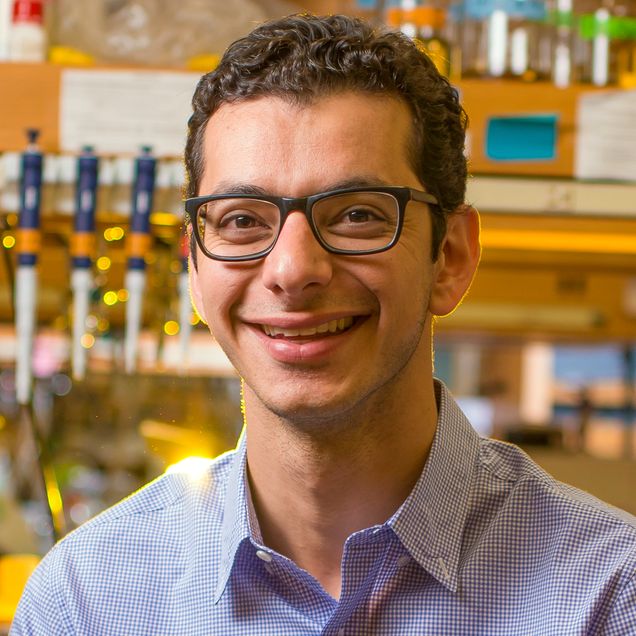How Cells Remember
Khalil’s synthetic biology research illuminates the little-understood epigenome
By Liz Sheeley
The genomes of any two unrelated people are more than 99 percent identical, yet those individuals can look completely different. Likewise, a liver cell and a neuron share the same genome, yet have very different functions. Those differences come more from the epigenome, the system that controls how the genome is modified, packaged and expressed. Although the epigenome plays major roles in biology and disease, it is not fully understood.

In new research published in Cell, Assistant Professor Ahmad ‘Mo’ Khalil (BME), BME graduate student Minhee Park and colleagues engineered a fully synthetic epigenetic system to better understand, study, and control its behaviors. Using synthetic biology, they constructed molecular modules that mimic features of natural epigenetic systems and found that they were able to induce epigenetic activities in mammalian cells, such as storing cellular memory.
“This adds to the growing body of work to advance synthetic biology in mammalian systems,” says Khalil. “To be sophisticated about how we control mammalian cells, we first need to understand basic principles of how cells turn on and off genes and how they retain the memory of these programs in development and differentiation.”
Khalil adds that developing synthetic biology tools in mammalian systems could be useful for therapeutic applications like cell therapy, which could allow for the control of immune cell function, for example.
Most genomes are decorated with an array of chemical modifications, which influence how a genome is packaged or unwound, and which genes get turned on and off. Some of these chemical modifications are epigenetic and thus heritable. How and why a particular modification is passed down through generations while another isn’t is still largely unknown.
As the basis of their epigenetic system, Khalil and colleagues used a bacterial DNA chemical modification and uploaded it into mammalian cells. They riffed off of accepted models of epigenetic regulation, known as a read-write systems, to create their own version. This version has synthetic factors that can write (place) the modification in the genome and factors that can read (recognize) it.

When they tested it in human cells, Khalil and his team found that their engineered read-write systems could predictively drive epigenetic behaviors that correlate to natural ones. Their system was able to spread the epigenetic modification down the genome.
They also used their system to engineer the memory of a gene being turned on, such that the gene’s expression could be maintained even after the “on” signal is removed. This type of memory is similar to how a toggle switch works and is the biological basis of cell differentiation and development. It’s how a cell that becomes a neuron stays a neuron throughout its lifetime. This could be used to engineer synthetic biological memory switches and devices for various applications.
Charles Gersbach, associate professor of biomedical engineering and director of the Center for Biomolecular and Tissue Engineering at Duke University, who was not involved in the team’s research, says, “The work from Khalil and colleagues in developing a synthetic epigenetic regulatory system is a landmark achievement and a leap ahead in our ability to control biological systems. It also provides a framework for understanding how natural epigenetic systems work.”